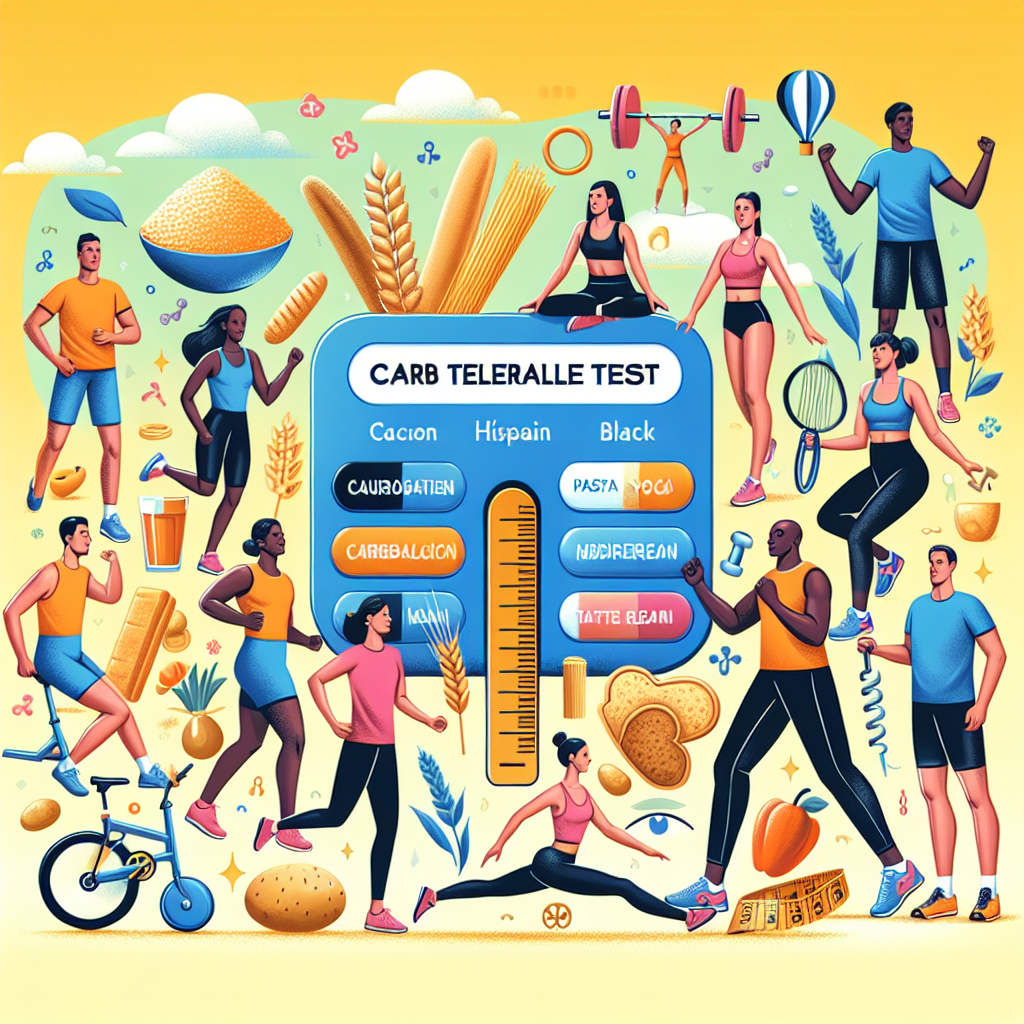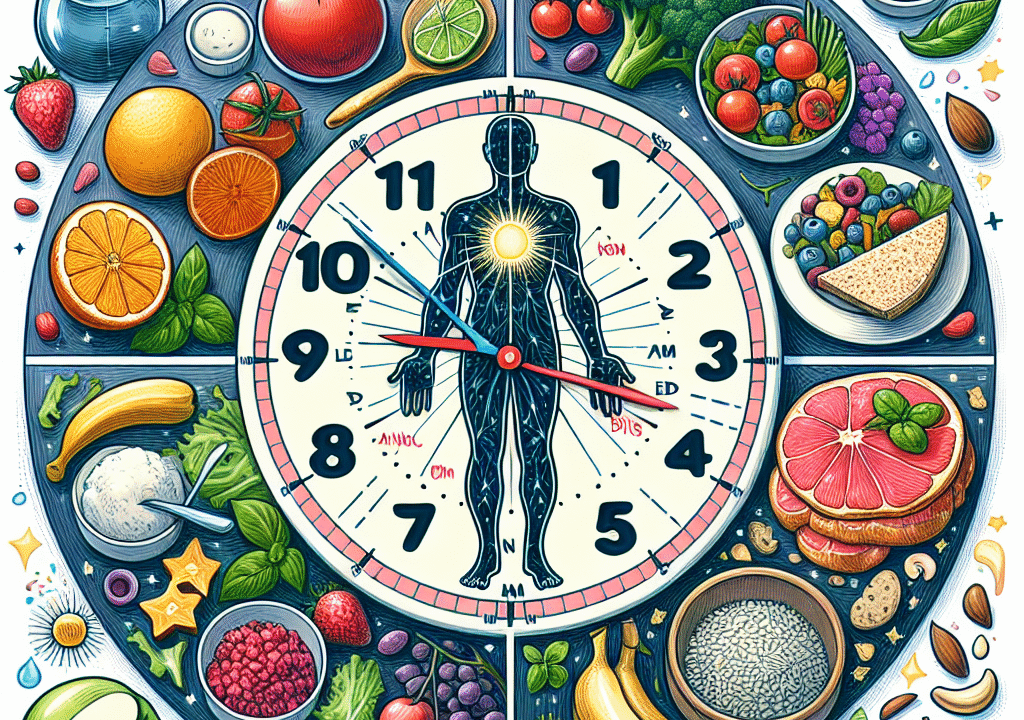
The Ultimate Guide to the Carb Tolerance Test — Discover Your Personalized Carb Sweet Spot
How to Test Your Carb Tolerance and Discover Your Personal Sweet Spot for Energy, Weight Loss, and Metabolic Health
If you’ve ever tried a low-carb, high-protein, or ketogenic diet, you may have noticed temporary results such as weight loss or increased energy. But what if these popular approaches aren’t aligned with your unique biology?
This is where a carb tolerance test comes in. This 7- to 14-day method can help you understand how carbohydrates affect your energy, cravings, mood, and metabolism. Instead of following one-size-fits-all eating plans, this personalized approach helps you find the optimal diet for your health goals.
What Is Carb Tolerance and Why Does It Matter?
Carb tolerance refers to your body’s individual ability to process carbohydrates efficiently. While some people thrive on a bowl of oats in the morning, others may crash before noon. These differences are shaped by several factors including genetics, activity level, insulin sensitivity, gut health, and hormone balance.
Dr. Mark Hyman, bestselling author and physician, explains it well: “The biggest mistake we make is assuming one diet works for everyone. Your body’s response to carbs is determined by your biology — not the latest trend.”
Finding your ideal carbohydrate intake for stable energy and blood sugar is crucial to creating a diet that supports your physiology, instead of working against it.
Why It’s Important to Know Your Carb Tolerance
Carbohydrates are often mislabeled as “good” or “bad,” but science paints a more complex picture. For instance, a 2020 study in the journal Cell found that individuals react very differently to the same carb sources.
Here’s how identifying your optimal carb intake for your metabolism can benefit your overall health:
- Regulates and stabilizes energy throughout the day
- Reduces sudden cravings and mindless snacking
- Improves metabolic function and insulin response
- Supports easier, more sustainable weight management
The key takeaway? Stop eating based on diet trends — start eating based on how your body actually responds.
For more resources on managing hormones and metabolism, visit edrugstore.com.
How to Perform a Personalized Carb Tolerance Test
This test is an easy-to-follow, three-step process designed to shed light on how different carbs affect your body. All you need is a food journal or mobile tracking app. For added accuracy, use a daily glucometer or continuous glucose monitor (CGM).
Let’s walk through the three phases of the test.
Step 1: Establish a Low-Carb Baseline (3 to 5 Days)
Start by reducing your carb intake to between 20 and 50 grams per day. Focus on foods such as:
- Non-starchy vegetables (spinach, cauliflower, zucchini)
- Lean proteins (eggs, chicken, fish)
- Healthy fats (avocados, olive oil, nuts)
Avoid grains, dairy, fruits, and processed sugars during this phase. This helps stabilize your blood sugar and provides a “baseline” for your body’s pre-carb state.
Track how you feel daily—note levels of energy, focus, cravings, digestion, and sleep.
Example: You may feel more energized in the morning but notice mood swings by the afternoon. This information creates a reference point for phase two.
Step 2: Reintroduce Carbs Gradually (5 to 10 Days)
Now it’s time to reintroduce carbohydrates, but do so systematically. Choose one type of whole-food carb per day to isolate how your body responds.
Healthier options to try:
- Half a sweet potato
- One-third cup of brown rice or quinoa
- Half cup of cooked oats
- One small banana or half a cup of berries
Avoid processed foods such as pastries, chips, white bread, or anything with added sugar. These will not give you clean data.
Two to three hours after eating, record how you feel. Ask yourself:
- Did your energy rise or crash?
- Were you mentally clear or foggy?
- Did hunger remain steady or suddenly spike?
- Was there any bloating or discomfort?
Tip: Portion size matters. Some may find that half a cup of quinoa boosts energy, while a full cup leads to sluggishness.
Step 3: Identify Your Personal Carb Sweet Spot
After tracking for several days, patterns will start to emerge. Use this information to define your ideal carb types, portion sizes, and timing.
Examples based on common observations:
- Fruit before a workout enhances energy; post-lunch consumption leads to fatigue
- A third cup of brown rice supports alertness; twice the amount causes sluggishness
- Quinoa improves focus, but oats trigger drowsiness
Keep in mind that carb tolerance is dynamic. It can shift based on activity, sleep, stress, and time of day.
According to Dr. Casey Means, metabolic health expert: “When you listen to your glucose feedback, you can customize your lifestyle for optimal energy, focus, and longevity.”
Pro Tip: Use a Glucose Monitor to Support Your Experiment
For real-time data, consider using a CGM or standard glucose testing device. Aim for balanced glucose curves rather than spikes and crashes.
Ideal numbers:
- Fasting glucose: Under 100 mg/dL
- Post-meal (2 hours): Below 140 mg/dL
Reactions such as blood glucose spiking above 150 mg/dL and dropping rapidly may indicate poor carb tolerance.
Combine your food journal with apps like MyFitnessPal or Levels to gain a holistic view of your metabolism.
Adjusting Your Diet Based on Results
Once your testing phase is complete, customize your diet according to your data. Generally, people fall into three carb intake ranges:
- Low-carb: 20 to 50 grams/day — great for insulin resistance or sedentary lifestyles
- Moderate-carb: 50 to 150 grams/day — supports stable energy and performance
- High-carb: 150 to 250 grams/day — ideal for athletes or highly active individuals
Strategic tips:
- You may tolerate more carbs immediately following a workout
- Avoiding starchy carbs at dinner could improve sleep and fat-burning
Carb Quality Is Just as Important as Quantity
While you may discover that your body tolerates higher carbs, the source of those carbs matters. Choose options that provide fiber, vitamins, and minerals:
- Sweet potatoes, squash, and beets
- Whole fruits like apples and berries
- Whole grains such as quinoa and oats
- Legumes like lentils or black beans
Avoid empty-carb foods like sugary cereals, white rice, soda, baked goods, and processed snacks. These contribute to inflammation, blood sugar spikes, and weight gain.
Use the Carb Tolerance Test To Personalize Your Health Strategy
By committing just two weeks to this experiment, you can develop a diet aligned with your biology. The results can help you:
- Reduce mid-day slumps and cravings
- Fuel your workouts effectively
- Minimize body fat storage
- Enhance focus and mood
The carb tolerance test serves as your personal GPS for nutrition. Instead of guessing how many carbs you should eat, you’ll learn exactly what works for your body — and why.
Ready to take control of your energy and metabolic health? Begin your carb tolerance test today and design your own nutritional blueprint.
Additional Resources and Support
Looking for help with insulin resistance or hormonal imbalances? Visit edrugstore.com for expert-backed insights and access to medical support.
References
- Zeevi, D., et al. (2015). Personalized Nutrition by Prediction of Glycemic Responses. Cell, 163(5), 1079–1094. doi:10.1016/j.cell.2015.11.001
- Ludwig, D.S., et al. (2019). The Carbohydrate-Insulin Model: A Physiological Perspective on the Obesity Pandemic. American Journal of Clinical Nutrition, 110(2), 267–273
- Hyman, M.D., Mark. Food: What the Heck Should I Eat? Little, Brown Spark (2018)
- Levels Health Blog. “Understanding Your Glucose Curve.” levelshealth.com


